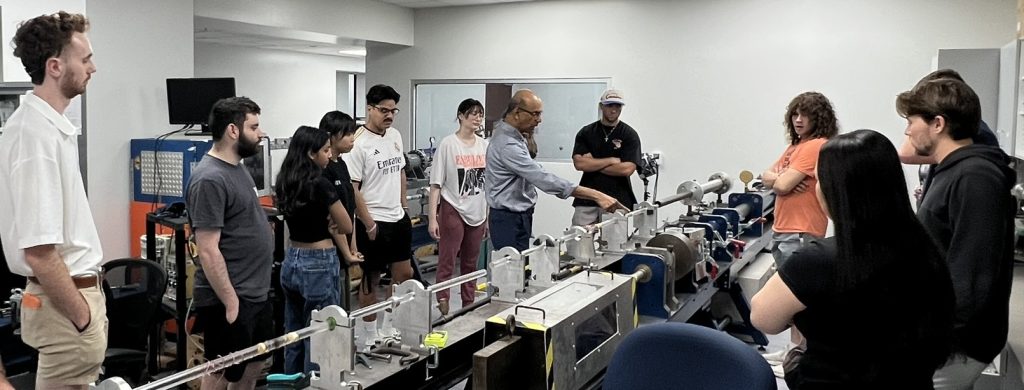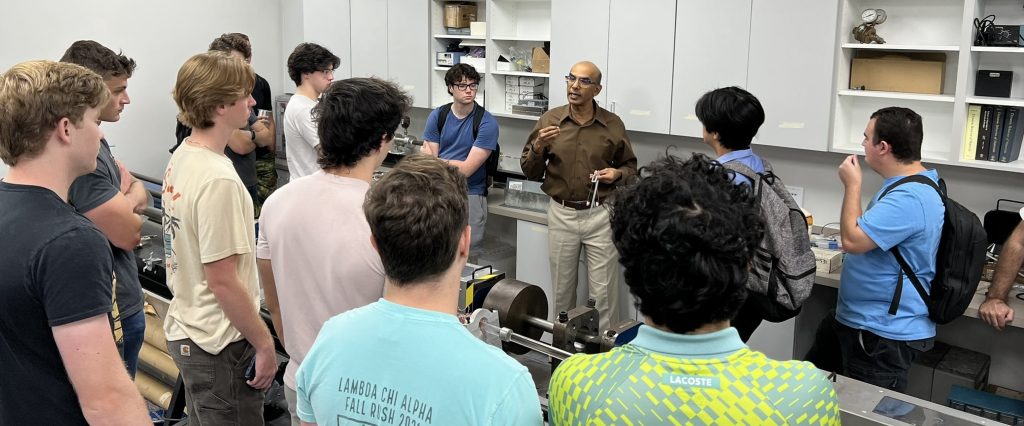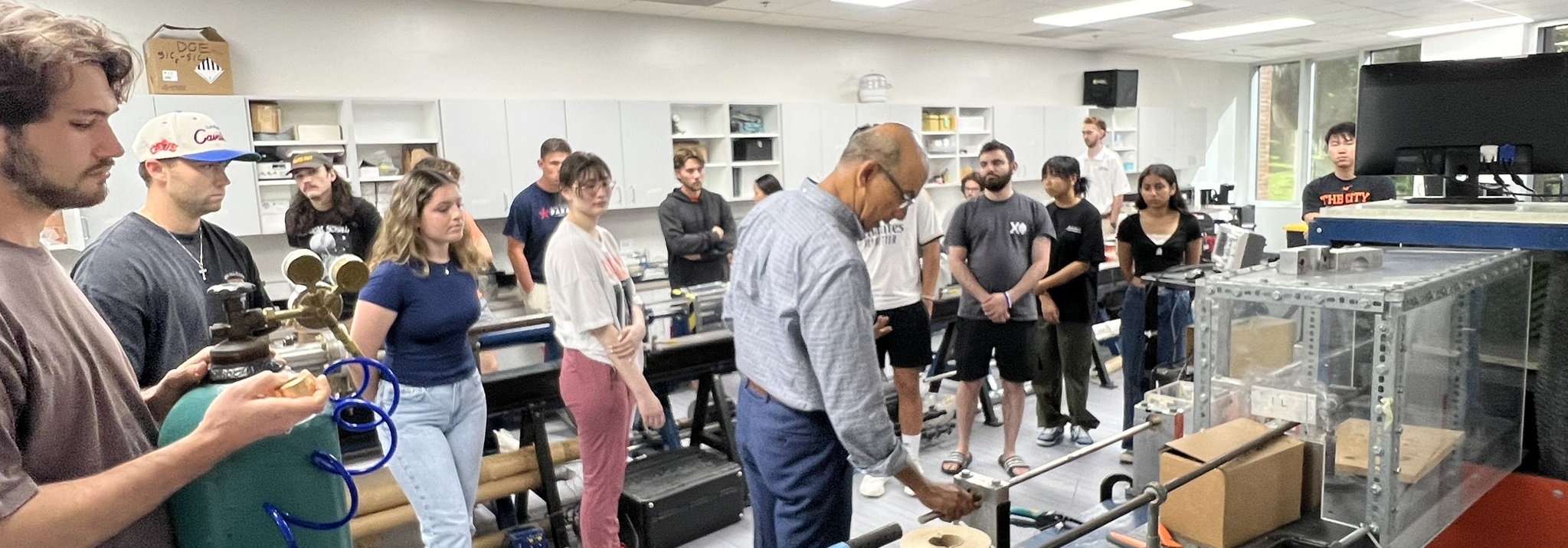
Mechanical Engineering (ME) Capstone students at the University of Florida (UF) are collaborating with Professor Ghatu Subhash to revolutionize materials testing by reimagining the Split Hopkinson Pressure Bar (SHPB) apparatus. Their goal is to harness the unique propagation properties of waves in solids to significantly reduce the size and cost of this testing equipment, making it more accessible.
This project supports Dr. Subhash, Principal Investigator of UF’s Laboratory for Dynamic Response of Advanced Materials (LDRAM) by building and testing a new SHPB configuration. Traditional materials testing often involves tensile tests, which apply slow, quasistatic forces to stretch materials and generate stress-strain curves. However, dynamic events like collisions and impacts require faster strain rate measurements—materials behave differently under high-speed deformation, such as car crashes, compared to static loading like those of a bridge.
In a conventional SHPB, a sample is placed between two long bars—the “incident” and “transmission” bars—while a third “striker” bar hits the incident bar, causing a wave to propagate through the sample and into the transmitter. Strain gauges measure differences between the waves in the two bars, revealing the material properties of the sample.
To study strain rates as low as 0.1 to 100 s⁻¹, which simulate slower impacts such as human falls, a traditional SHPB setup needs to be several football fields long. While such large apparatuses exist, they are expensive and occupy significant space, making them impractical for many labs. To address this challenge, Professor Subhash developed and patented an alternative design, the “Millipede Bar” geometry, which dramatically reduces the apparatus’s size by folding the long bars into switchbacks, allowing the same strain rate measurements in a much smaller footprint.
The goal of this Capstone project is to design, build, and test Millipede Bar prototypes that facilitate waves propagation through switchback junctions without significant signal loss or wave dampening. Well-thought-out designs capitalizes on wave propagation in solids allowing compression and tension waves to traverse the switchback junctions with minimal signal integrity loss.
“I am excited to be working with undergraduate design students again, especially in building working examples of this innovative idea for a new experimental materials testing method,” Dr. Subhash said. “Working hands-on to implement design realization projects provides opportunities to grow their knowledge and experience beyond the undergraduate level.”
During a recent lab visit, LDRAM Ph.D. student Michael MacIsaac demonstrated the SHPB for Capstone students, providing a deeper understanding of the apparatus and its operation.
“The design experience of building a piece of research equipment broadens students’ perspectives and skillsets relative to knowledge creation and discovery,” MacIsaac said. “ME Capstone gives our undergraduates unique exposure to how mechanical design benefits the research process.”
The Millipede Bar geometry presents design challenges and trade-offs for the students. A key decision involves whether to create a flat, 2D bar with numerous switchbacks or to utilize the third dimension by folding the bar. While the 3D design makes it easier to impose the necessary mechanical boundary conditions (how the bar is held) for pure linear motion, this geometry is more difficult to manufacture compared to the simpler 2D version. Some groups opted for the 2D approach, while others embraced the 3D geometry despite its complexity.

“I’m excited for the opportunity to design and build something at the cutting edge of material testing,” said Nate Braswell, an ME senior in the Capstone class.
Capstone projects not only culminate students’ engineering education but also serve as powerful professional development experiences. Dr. Matthew J. Traum, Senior Lecturer and Instructional Associate Professor, emphasized the unique opportunities these projects provide.
“Our undergraduates collaborate directly with top UF research faculty to create systems that aren’t commercially available yet, advancing the university’s research capabilities,” Traum said. “ME Capstone students create prototypes that deliver unique value to researchers, and there is a market for this brand of innovation,”
Traum notes that Capstone projects often seed startup companies, with many former students leveraging their projects into entrepreneurial ventures. In fact, the Millipede Bar is anticipated to become the flagship product for a new materials testing startup that Drs. Traum and Subhash plan to launch with Capstone students.

